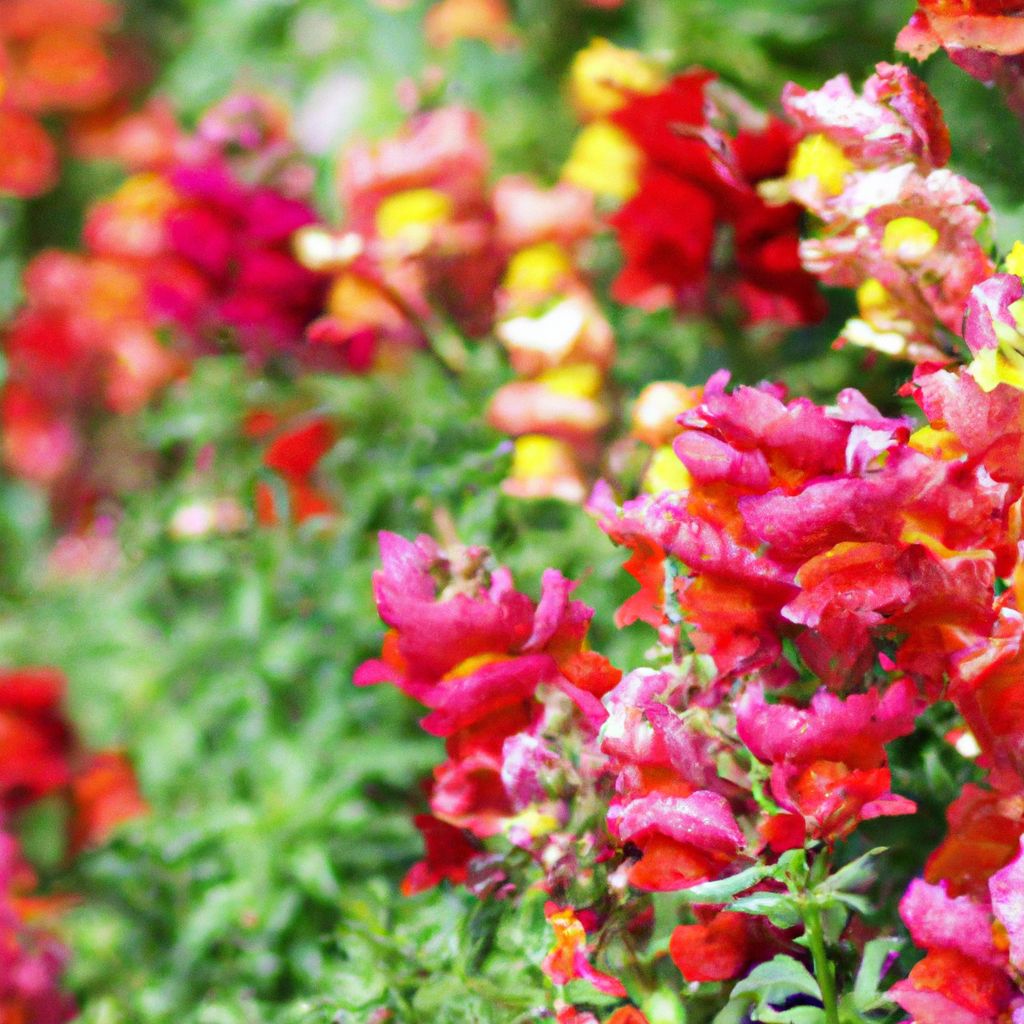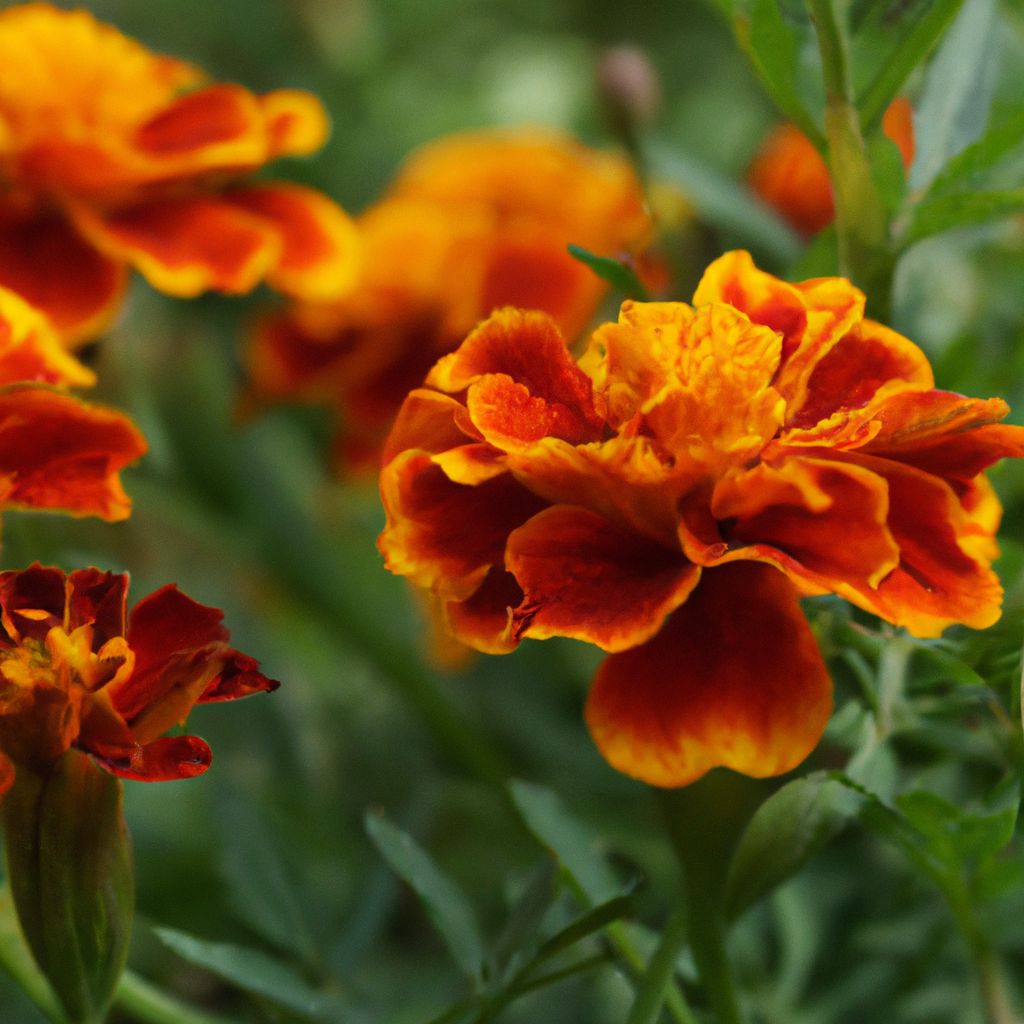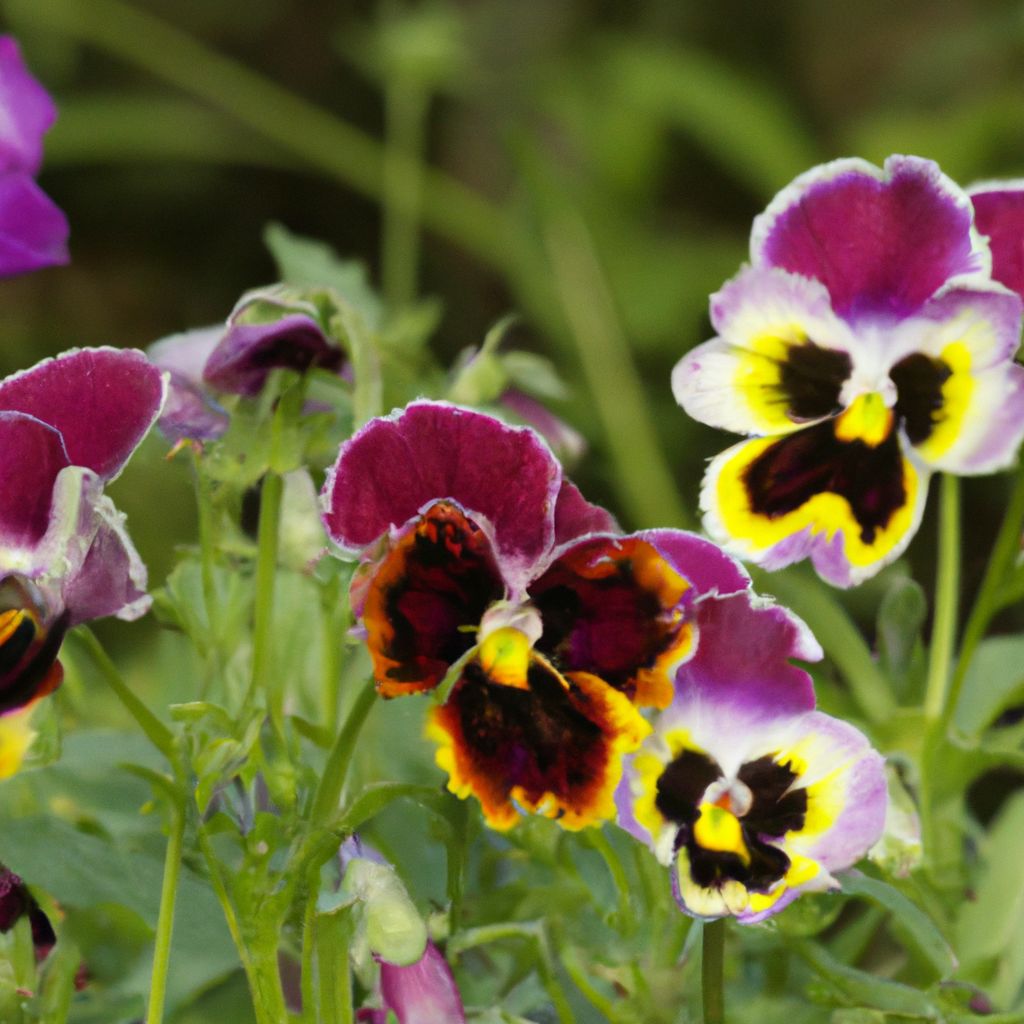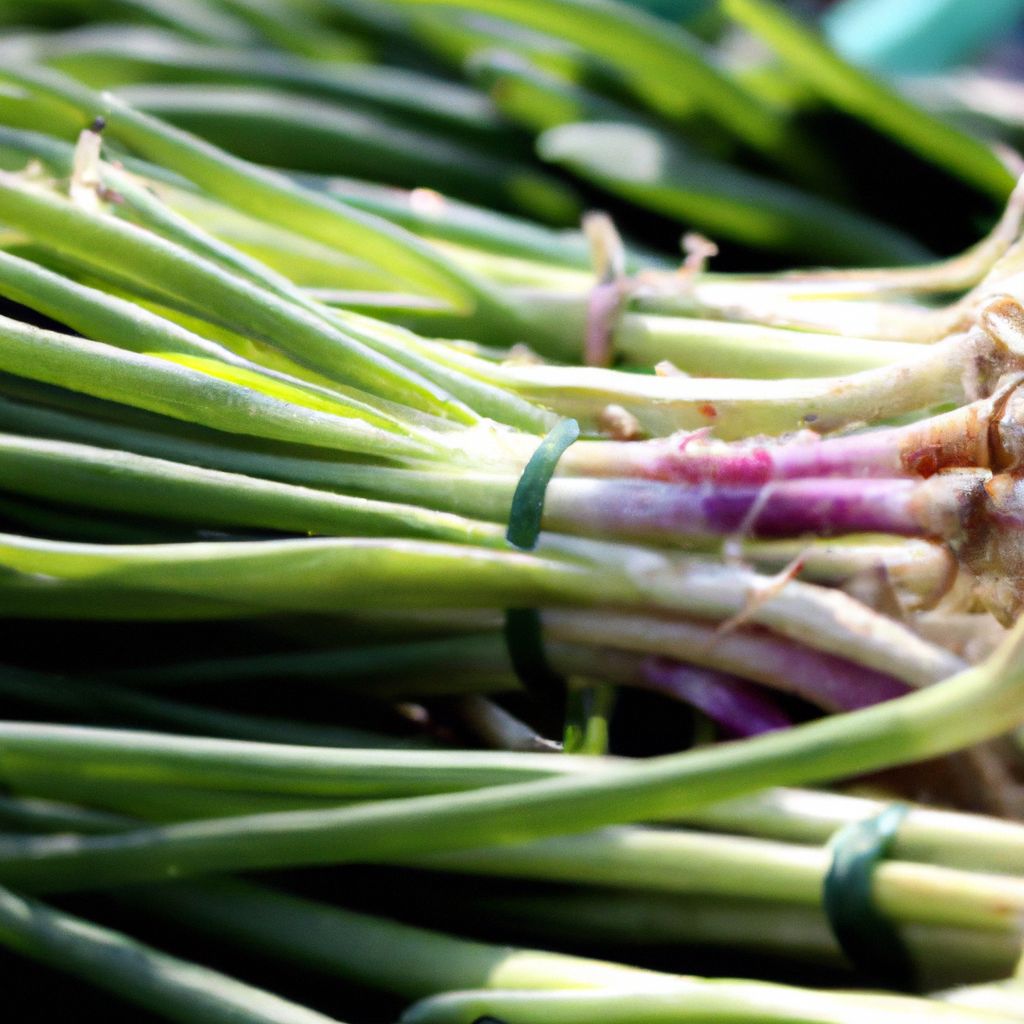With their playful blooms resembling a dragon’s mouth, snapdragons are a delightful addition to any garden. These classic flowering plants add a burst of color and visual appeal. Snapdragons are also relatively easy to cultivate with proper care. Follow this comprehensive guide for tips on growing snapdragons at home: selecting locations, preparing soil, planting, and caring for snapdragons to create a vibrant and beautiful garden display.
Selecting the Right Location
When starting your snapdragon gardening journey, choosing an optimal location is the first critical step. This section covers key factors to consider when selecting where to plant your snapdragons.
Sunlight Requirements
- Snapdragons thrive in areas receiving full sun for at least 6 hours daily. Select a location that gets ample direct sunlight.
- Morning sun is preferable, as intense afternoon sun can scorch flowers in hot climates. If planting in partial shade, aim for a minimum of 4-6 hours of direct sun.
- Watch sunlight patterns in your garden over time. Track where sunlight shifts based on time of day and season. Plant accordingly.
- If planting snapdragons in containers, ensure you can easily move pots to adapt to changing light conditions.
Soil Drainage
- Well-draining soil is crucial, as snapdragons do not tolerate soggy or waterlogged conditions. Choose a garden spot where water drains freely.
- Test drainage by digging a small hole and filling it with water. If water remains pooled for longer than 1 hour, improve drainage before planting.
- Adding organic material like compost or mulch creates air pockets in the soil to facilitate drainage. Incorporate up to 30% amendments.
- Raised garden beds also promote drainage by allowing excess water to run off. Build beds 6-12 inches high, lining with landscape fabric.
Temperature Needs
- Snapdragons prefer cool conditions, flourishing in temperatures between 60-75°F. Account for seasonal weather patterns when choosing location.
- In warm climates, select a site that gets shade during the hottest afternoon hours to prevent overheating.
- Start seeds indoors 8-10 weeks before last frost date. Harden off young plants before transplanting them outside after danger of frost has passed.
- Use floating row covers or low tunnels over plants as needed to protect from unexpected frosts, especially during spring and fall.
Wind Protection
- Shelter snapdragons from harsh winds, which can damage their slender, brittle stems. Opt for planting beds that are naturally protected.
- Install screens, fences or hedges as windbreaks if your garden lacks natural buffers. Ensure at least 20% air flow.
- Place heavy items like rocks or pavers around plants to weigh down mulch and prevent it blowing away in windy conditions.
Mobility for Containers
- If planting snapdragons in pots, window boxes or hanging baskets, ensure containers can be easily moved to capture sunlight throughout the day.
- Dolly platforms with wheels provide an effortless way to shift containers chasing optimal light at different times. Secure containers properly.
- For hanging baskets, install a pulley system for adjusting height and direction as needed over the season. Protect plants from wind sway.

Preparing the Soil
In addition to choosing the right location, taking time to prepare the soil properly makes a tremendous difference in the health and performance of snapdragons. Follow these tips for creating ideal growing conditions:
Clearing the Area
- Remove any weeds, rocks, roots or debris from the area you have selected for planting. Start with a clean surface.
- If soil is compacted, loosen it thoroughly with a shovel, garden fork or tiller to a depth of at least 8 inches. Break up clumps.
- Grass competing with flower beds? Solarize the area by moistening soil, covering with clear plastic for 4-6 weeks to kill grass and weeds.
Incorporating Organic Matter
- Enhance drainage and provide nutrients by mixing 2-4 inches of organic material into soil. Compost, well-rotted manure, peat moss and leaf mold are great options.
- For in-ground beds, till amendments into the top 8 inches of soil. For containers or raised beds, blend thoroughly into the entire soil mass.
- Organic additions also improve moisture retention, aerating dense soils. Target mixing in roughly 30% organic matter by volume.
Soil Testing
- Conduct a soil test through your local extension office or an online lab. This will reveal pH and nutrient levels.
- Snapdragons thrive best in slightly acidic to neutral soil, with a pH between 6.0-7.0. This encourages proper nutrient availability.
- If pH needs adjusting, add garden sulfur to lower or limestone to raise. Recheck pH after a few weeks and adjust further if required.
Nutrient Amendments
- If soil test reveals any deficiencies in essential nutrients like nitrogen, phosphorus or potassium, incorporate targeted amendments.
- Common snapdragon boosters include bone meal for phosphorus and blood meal or fish emulsion for nitrogen. Follow product instructions.
- When mixing in amendments, ensure even distribution throughout the soil to prevent creating hot spots.
Final Preparation
- Once amendments are incorporated, thoroughly blend the existing soil with additions to distribute evenly. Break up any clods.
- Level and smooth the surface to create a uniform planting bed. Remove any rocks or debris unearthed in the preparation process.
- Moisten the prepared soil before planting if it is not already slightly damp. Dry soil can hinder seed germination.
Planting Your Snapdragons
Once suitable soil preparation is complete, it’s time for the fun part – bringing home your snapdragons and getting them planted. Use these steps for proper placement:
Selecting Plants
- Choose compact snapdragon varieties under 2 feet tall if planting in containers or restricted spaces. Go for taller types in spacious beds.
- Seek out disease-resistant cultivars for ease of care. Ask for nursery guidance to match the variety with your climate and growing conditions.
- Inspect plants for vigor prior to purchase. Avoid specimens with discolored, yellowing leaves or excessive stretching between leaves.
| Variety | Height | Color |
|---|---|---|
| Chantilly | 24-30 inches | Mix of solids and bicolors |
| Madame Butterfly | 16 inches | Mix of pinks, reds, yellows |
| Rocket Mix | 14-16 inches | Fiery mix of reds, oranges, yellows |
Preparing Holes
- Space holes 12-18 inches apart depending on mature plant size, allowing enough room for growth.
- Dig holes to a width and depth that matches the snapdragon’s root ball. The top should sit level with the soil surface.
- To minimize transplant shock, dig holes and plant on a cool, overcast day. Avoid hot afternoons.
Placing Plants
- Carefully place each plant in its hole, handling the stems gently. Ensure the root ball sits upright and level with the surrounding soil.
- For root bound plants, gently tease apart any circled roots before placing in hole. This encourages outward growth into the soil.
- Water root balls thoroughly before planting if soil is dry. Alternatively, water plants immediately after placement.
Backfilling Holes
- Refill holes with the prepared soil blend, firmly pressing out any air pockets with your hands.
- Water again after backfilling to saturate soil. Let excess water drain away before mulching.
- Avoid compacting the soil excessively around plants as this inhibits crucial air flow to roots.
Initial Care
- Water transplants regularly for the first few weeks, keeping surrounding soil consistently damp but not soaked. Prioritize during hot, dry weather.
- Place 2-3 inches of organic mulch like bark chips or shredded leaves around plants to retain moisture and reduce weeds. Leave space near stems.
- Provide shade for newly planted snapdragons while they establish roots. Use shade cloth or position containers in dappled light.
Caring for Snapdragons
While relatively unfussy, snapdragons do require some attentive care during the growing season to support strong, vibrant growth. Master these techniques:
Watering Effectively
- Water snapdragons deeply once weekly in spring and fall, twice weekly in peak summer. More frequent light watering encourages shallow roots.
- For containers, check soil moisture daily, watering when top inch feels dry. Avoid both excessive dryness and constant sogginess.
Aim for soil to dry out slightly between waterings. Snapdragons are prone to fungal issues in perpetually damp soil.
- Early morning watering allows leaves to dry quickly in sun, preventing disease. Avoid overhead watering.
- Reduce watering frequency as plants finish flowering in fall but don’t allow roots to dry out completely.
Providing Nutrients
- Fertilize every 2-3 weeks during active growth and flowering with balanced liquid fertilizer diluted to half strength.
- Alternate fertilizing with plain waterings to prevent buildup of excess salts. Leach containers occasionally.
- Discontinue fertilizing by end of August to harden off plants for winter. Excess late growth increases cold damage risk.
Supporting Growth
- Insert stakes next to the largest snapdragon stems once plants reach 6 inches high. Tie stems loosely to stakes as they grow taller.
- For mature plants over 2 feet, use sturdier supports like small tomato cages or trellises.
- Check ties and supports frequently to prevent stems slipping and snapping due to wind movement or top-heaviness.
Addressing Issues
- Monitor plants closely for common issues like aphids, slugs, powdery mildew and rust. Take action promptly to keep problems in check.
- Pick slugs and snails by hand after dark or trap using sunk beer cans. Avoid chemical molluscicides that also harm beneficial insects.
- Control fungal diseases by improving air flow and reducing wet foliage. Remove affected areas promptly.
- Blast aphids off plants with a strong stream of water. Apply insecticidal soap or neem oil for heavy infestations.
Deadheading and Pruning
- Remove spent blooms regularly by snipping flower stems back to a leaf joint to redirect energy to new blossoms.
- Prune back leggy stems in spring to encourage bushy new growth. Make cuts just above a leaf joint.
- Cut back any diseased, insect-damaged or dead foliage to improve appearance and discourage pest issues.
- Disinfect pruners between plants with isopropyl alcohol to avoid transmitting diseases.
Getting the Most from Snapdragons

A few simple techniques can help you get the most out of your snapdragons in terms of maximizing blooms and enjoyment:
Lengthening Bloom Time
- Deadhead diligently to keep plants flowering. Faded blooms signal the plant to stop producing flowers.
- Apply balanced fertilizer every 2-3 weeks during peak bloom season to fuel steady flower production.
- Mulch around plants to maintain cool, moist soil vital for continuous flowering through heat waves.
- Avoid drastic pruning in fall so plants can prepare for winter by setting next year’s flower buds.
Cutting Flowers
- Harvest snapdragon blooms in early morning when stems are well hydrated and flowers are open.
- Use clean, sharp pruners or garden scissors. Make cuts on a slant above a leaf node.
- Immediately place cut stems in a bucket of cool water out of direct sunlight. Re-cut stems underwater before arranging.
- Remove any leaves that would sit below the water line to deter bacterial growth.
- Add floral preservative to the vase water to nourish and prolong the cut flowers.
Saving Seeds
- Allow seed pods to mature and dry completely on plants after flowering finishes. Pods turn light brown and papery.
- Collect dried pods into paper bags. Break pods open and separate out seeds. Discard pod debris.
- Spread seeds in a single layer on paper towels or screens. Allow to dry for 1-2 weeks in a well-ventilated space.
- Place thoroughly dried seeds in airtight glass jars or envelopes. Label with variety and date. Add silica gel packs to absorb moisture.
- Store in the refrigerator or another cool location. Viability typically lasts 3-4 years when properly stored.
Designing a Snapdragons Garden
Incorporating snapdragons thoughtfully into your landscape design can create a showstopping display. Follow these tips:
Complementary Colors
- For bold contrast, pair warm-toned snapdragons like sunset-hued Rockets with cool purple and blue flowers like salvia.
- Play up complementary colors like orange snapdragons with blue morning glories and yellow coreopsis for vibrant interest.
- Repeat your chosen snapdragon colors throughout the garden, including in foliage plants like colored kale or coleus.
Height Variation
- Plant taller snapdragons towards the back or center of beds, surrounded by shorter varieties and annuals like petunias.
- Allow proper spacing for growth, using taller types like Chantilly as thriller plants in container arrangements.
- For borders, use mid-height snapdragons like Madame Butterfly edging taller plants. Allow them to gently spill over edges.
Flower Shape and Texture
- Contrast the dense spikes of snapdragons with soft, airy flowers like baby’s breath.
- Combine snapdragons with dangling blooms like fuchsia for multi-dimensional appeal.
- Plant varieties with double or ruffled blooms for added interest alongside smooth, open flowers.
Foliage Enhancement
- Let snapdragons intermingle with contrasting foliage like frilly parsley or purple basil.
- Underplant snapdragons with low-growing foliage plants such as sweet alyssum or creeping Jenny.
- Try combining snapdragons with silver-toned plants like dusty miller. Their leaves intensify nearby colors.
Troubleshooting Common Snapdragons Issues
Even when cultivated with care, snapdragons can sometimes encounter problems. This troubleshooting guide addresses common issues:
Yellow or Wilting Leaves
- Overwatering causes roots to rot and leaves to yellow. Allow soil to dry out between waterings.
- Underwatering shows similar symptoms. Check soil frequently, watering when top few inches become dry.
- Improve drainage if roots sit in soggy soil. Consider planting in raised beds.
- Fertilize monthly to provide necessary nutrients if leaves yellow despite proper watering.
Powdery Mildew
- This fungal disease coats leaves and stems with white powdery spots. It thrives in damp, stagnant air.
- Space plants to allow air circulation. Avoid excessive nitrogen fertilization which produces lush growth.
- Remove affected parts promptly. Improve airflow with fans if humidity remains high.
- Use neem oil or potassium bicarbonate sprays as preventive treatments on unaffected plants.
Snapdragon Rust
- Rust fungus causes yellow/orange blisters on leaves and darkened lesions on stems.
- Remove and destroy severely infected plants. Prune affected leaves and stems on less damaged plants.
- Space plants widely and avoid overhead watering to reduce humidity levels.
- Apply copper fungicide spray at first sign of infection according to label directions.
Aphids
- These tiny sap-sucking insects cluster on stems and undersides of leaves. They secrete sticky honeydew.
- Knock off visible aphids with a strong stream of water. Repeat frequently as they reproduce rapidly.
- Apply insecticidal soap or neem oil sprays targeting the undersides of leaves and stem joints.
- attract beneficial ladybugs and lacewings by planting nectar-rich flowers. They feast on aphids.
Blossom Drop
- Extreme temperature swings can cause snapdragon buds or flowers to shrivel and fall off before fully opening.
- Provide shade protection during hot weather. Move container plant to sheltered areas on sweltering days.
- Cover plants with row cover or drape fabric over supports to shield from sudden frosts in spring and fall.
Attracting Pollinators to Snapdragons
With their tubular flowers full of nectar, snapdragons are magnets for pollinating insects. Take these steps to attract more pollinators:
- Plant nectar-rich companion plants like bee balm, cosmos, lavender and salvia. These supply food for many species.
- Provide a water source like a shallow birdbath, stream or mister for pollinators to drink and bathe. Include rocks for perching.
- Allow flowering groundcovers like thyme to grow between snapdragons. Low growth provides shelter.
- Select single flower snapdragons, which are easier for pollinators to access than doubled types.
- Avoid applying pesticides which can be toxic to bees and other beneficials. Handpick pests when possible.
- Include night-blooming flowers like moonflowers to attract moths. Their elongated tubular shape matches snapdragons.
- Plant a diversity of flowers blooming in succession. This provides continuous nectar throughout the season.
- Include native flowering herbs, shrubs and trees to attract the widest range of native pollinators all season long.
- Allow vegetation to grow undisturbed in parts of your garden. Ground-nesting native bees need sheltered homes.
- Register your garden as an official pollinator habitat. Install a small sign identifying it to raise community awareness.
Creative Uses for Snapdragons
Beyond ornamental garden displays, snapdragons offer versatile uses for floral arrangements, crafting and more:
| Use | Method |
|---|---|
| Table centerpieces | Gather various colors in a low bowl or vase |
| Bouquets | Mix with roses, baby’s breath, herbs |
| Corsages/boutonnieres | Use minis, wrap stems in florist tape |
| Wreaths | Intermingle blooms and foliage in a wire frame |
| Potpourri | Dry flowers and add to fragrant herb and flower mixtures |
| Decorating cakes/cupcakes | Use edible flowers for special occasions |
| Candied flowers | Coat blooms in egg white and superfine sugar to crystallize and preserve |
| Crafting | Press or dry blooms to make cards, gifts, framed art |
| Dyeing | Use blooms to gently dye silk, paper or other natural materials |
| Potpourri sachets | Place dried blooms in small fabric pouches |
| Herbal remedies | Infuse in oil for soothing skin salves; steep in vinegar for rinses |
| Essential oils | Distill the mild, sweet fragrance into essential oil for perfumes, room scents |
| Weddings | Carry celebratory bouquets; decorate ceremony and reception sites |
| Frozen into ice cubes | For festive drinks; use edible flowers |
With their lasting beauty and diverse colors, snapdragons offer a multitude of creative possibilities beyond the garden. Preserve their loveliness or craft unique natural décor and gifts to share their charm year-round.

Growing Snapdragons in Containers
Don’t have space for an in-ground flower bed? You can easily grow snapdragons on a porch, patio or balcony in containers. Follow these container gardening tips:
Choosing Containers
- Select containers at least 6 inches deep and wide to accommodate snapdragon roots. Drainage holes are essential.
- For hanging baskets, opt for steel wire cages lined with sphagnum moss and coco fiber rather than shallow pots.
- Match container material to your climate. Porous terracotta breathes in hot zones. Glazed ceramic retains moisture in dry regions.
Potting Mix
- Use a quality potting soil, not garden soil which compacts and retains excess moisture.
- Mix in additional perlite or vermiculite to improve drainage. About 30% amendment by volume is ideal.
- You can make your own mix by combining peat moss, compost, perlite and vermiculite. Feel free to add worm castings.
Planting Snapdragons
- Select compact, dwarf snapdragon varieties under 14 inches for containers. Taller types need more root room.
- For rooted cuttings, bury just deep enough to cover the root ball. Seeds can be sprinkled atop the soil.
- Space plants 6-9 inches apart in containers depending on variety size to prevent overcrowding.
Container Care
- Check soil moisture daily. Water thoroughly when top inch feels dry to the touch. Don’t allow pots to completely dry out.
- Apply diluted liquid fertilizer every 2-3 weeks during the growing season. Rinse buildup with plain water occasionally.
- Move containers to follow optimal sun exposure. Protect from intense midday sun in warmer zones.
- Guard against wind and rain damage which is intensified in elevated containers. Use screens or drape fabric if needed.
Overwintering Containers
- In frost-free zones, you can keep containers outdoors year-round. Cut plants back severely after flowering finishes.
- For cold winter zones, take cuttings or dig up bulbs to propagate next season. Store dormant bulbs frost-free over winter.
By using the right strategies, snapdragons can thrive beautifully in patio pots or hanging baskets, adding vibrant color even for those without garden space.

FAQs About Growing Snapdragons
If you’re new to growing snapdragons, chances are you have some questions. Here are answers to some frequently asked questions:
How long do snapdragons take to bloom?
From seed, snapdragons take 10-12 weeks to bloom. Transplants bloom much faster in 4-6 weeks. Select healthier plants that are beginning to show flower buds.
What conditions do snapdragons need to thrive?
Snapdragons require full sun, well-drained soil, average moisture, and cool temperatures between 60-70°F. Shelter from strong winds also prevents damage.
When should I plant snapdragons outside?
Direct sow after the last spring frost once soil warms to at least 55°F. Or transplant seedlings after hardening off when nighttime temps are above 50°F.
How do I grow tall snapdragons?
Choose naturally tall varieties, space plants 18 inches apart, use stakes for support, and don’t cut back in fall to allow maximum growth.
Why are my snapdragon flowers dying?
Hot, dry weather causes blooms to shrivel. Improve air circulation, provide afternoon shade, and mist plants to help counteract heat stress.
How do I overwinter snapdragons?
In zones 7 or warmer, mulch thickly to insulate roots. In colder zones, take cuttings or lift bulbs to store dormant over winter indoors.
Can I grow snapdragons from cuttings?
Yes, take 4-6 inch tip cuttings in summer. Remove flowers and lower leaves, dip in rooting hormone, and plant in soilless mix. Keep evenly moist.
How do I save snapdragon seeds?
Allow pods to fully ripen and dry on plants. Remove seeds, dry further, then store in an airtight container in the refrigerator. Viability lasts about 3 years.
We hope these tips empower you to start growing snapdragons with confidence. Let us know if you have any other questions – we’d be happy to help you on your gardening adventures with these delightful plants!

















































